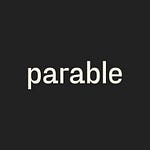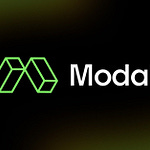NFTs are known as a consumer trend. But with every new consumer need, there are businesses looking to offer a solution, and there are other businesses that want to help those businesses. Which means that there are now B2B companies enabling the NFT ecosystem.
I discussed this topic in my latest podcast episode, with Lisha Li, CEO at Rosebud AI. We covered:
What opportunities has the NFT world opened up for B2B companies?
How did Lisha pivot her Web2 company into a Web3 company?
What does Rosebud’s Go-to-Market look like?
I hope you enjoy this conversation as much as I did, and feel free to reach out to me with any thoughts. Let's dive in!
If you’d like to hear more about topics related to scaling SaaS and Web3 businesses, you can subscribe to my newsletter (for free) here:
Leadership Roles
As always, I’ll share a few leadership roles at companies I’m excited about:
LaunchNotes: Director of Engineering
Kingdom Supercultures: Head of People
VendorPM:
Guide: Head of Marketing
Transcript
Allison: Lisha, thank you so much for joining us on the podcast today. I'm so excited to chat with you about what's going on in Web3 and the movement that you are part of and helping to champion.
Lisha: Thank you for having me. I'm excited to chat.
A: To start off, how did you start your company and why? And how did you get into Web3?
L: Web3 was definitely later in the journey. Our focus and my background is in machine learning and, in particular, deep learning. I was really passionate about the developments in synthetic media: generating visuals, videos and creating creator tools, to help people make visual assets.
In the beginning, we were launching a bunch of mobile apps and some of them went viral, because their focus was on making the interface stupidly easy for anybody to try to engage and start using these models. But what made us seriously consider a Web3 pivot was the fact that it became clear that there were some very serious, long-term application in the NFT space.
In particular, many gaming applications were developing gaming assets and minting them as NFTs — which can have a huge financial upside, but also are a way to support creative work. The same was true for fine artists and other people creating visual assets outside of gaming. I was super passionate about that use case. It became clear to me that if I wanted to focus on those types of users, then I should completely focus on creating NFTs and using our ML tools to focus on that use case.
A: Who are the customers that you're focusing on today, and what might they be, say, a year or two for now?
L: Right now we actually have much more of a B2B focus. Before, we were releasing consumer apps, and that was because consumers were the ones willing to try. I would call it prosumer. They were sometimes creating assets for smaller businesses, for their own TikTok channels. They were influencers as well. But yeah, primarily I would just say that's a consumer angle.
Now we partner or collaborate with other projects, whether they're launching these play-to-earn games or helping people launch NFT collections. An artist might want their mentors or their community to be able to co-create with them, but it's impossible for them to help a 10,000-person community create things in their style. But if we train a deep learning generative model — GANs, diffusion — on an artist's style of work or their portfolio, then we can actually facilitate that experience of interactive creation. Our value-add is to bring all of our learnings from creating consumer experiences to our work with these projects, to build interactive experiences for their NFT projects.
We raised a crypto strategic round recently, and our lead was Animoca Brands. So you can imagine they're involved or invested in a bunch of these gaming projects.
A: On that note, do you work with marketing agencies that might be supporting a celebrity client or someone else who wants an NFT that's in their image?
L: It's not something that we've started pursuing yet, because we had access to some artists directly. But with that said, I think it'll make sense as a go-to-market strategy because there are many NFT collections that are oriented around, "Okay, now people want to drop digital merchandise," and we can also help with that. Maybe not exactly marketing agencies, but maybe we’ll work with managers of talent, like creator talent, whoever is the solopreneur, that is looking to launch NFT drops.
A: For one of the gaming companies that might be working with you, what do you think defines success in their mind? If they're happy with their working relationship with you, what does that look like?
L: The thing we are both aligned on is, how do you drive more utility to the community? Back in 2021, NFTs were really hyped up. Anybody could do a 10K collection and probably sell out and make money. But I think those days are gone. You need to have a sustained reason for why the community is excited about not only NFT drops, but why are they playing the game or in the community. And so what would define success is the fact that we can allow the users, the mentors, the community, to participate in creation in some way. The metrics are, do people mint stuff? what is the actual revenue? and do people trade on it? The goal is to have metrics for sustained value and engagement.
A: Are these gaming companies trying to build internally initially when you go talk to them, or do they have some kind of alternative?
L: They don't have anything that's interactive. They're obviously very successful already doing drops, getting corporate partnerships, and creating these gaming experiences. But if they wanted to have a huge number of variations and unique variations, that's something we can help with, and we work with creative teams on that.
Also, it's just not currently possible for them to take any user input to customize it without working with us. To your point about what's a success metric, we're hoping to prove that this user input is valuable for community engagement.
A: So it sounds like you're opening up new opportunities that these companies previously didn't have. You're truly creating a new market. What do you think that market looks like five years from now?
L: In the short term, we want to see if co-creation can help make IP and proliferate these gaming worlds, and if community input can help with corporate merchandising.
I think what's really missing, especially in VR, is that the content creators are still limited to people who are extremely technical. What's really different in these Web3 projects is that you do have a lot of participants in the community who are consumers, but hopefully you can elevate them, at least a subset of them, to creators as well. I would say the analogy is very similar to how TikTok made it easy to make videos. It created a new class of creators, because it was stupidly simple to create a video, and so people who had things to say could now be a creator themselves.
A: With this movement do you anticipate there will be many more B2B companies operating in the NFT space, and if so, what do you think are the categories of B2B companies?
L: B2B is hard in the space, but also it's what people want to bet on first. Because if you believe that the ecosystem will grow, then it might be easier. So I've seen some API plays here, or Carta for Web3, where they help with token launches.
What we're doing belongs in a broader category, of how do you make NFT collections? Because I see the need not just coming from the visual part. In fact, the visual part I would say is very small. What we're latching onto is community engagement — that's what drives value.
If you're working with brands that want to do drops, then it's all about, how do you onboard people who aren't natively in Web3, and what value is it to them?
In general, I'm seeing a lot more tooling than there are applications.
A: Is there a certain Web2 company that you would consider yourself to be an analog for? Or if not, is there a Web2 company that you aspire to be like in some way?
L: Probably not as an analog, because the business model that enabled us to focus on these type of creators, whether it's in the gaming sector or fine art or creators, is just not possible in Web2. Also, the gaming industry has been notoriously difficult to sell into, and focusing on fine artists was not a venture model in Web2.
That said, there are definitely a bunch of companies that are working in the creator economy who inspired me in terms of how they built product and their business model. The first thing that came to mind when I was trying to think about the right go-to-market was Canva. I really like Canva because they had the strategy to templatize so many different types of use cases. It’s about making things really easy and accessible and then allowing people to achieve professional-ish looking results.
A totally different company in that category is GIPHY. I found it delightful to learn how they figured out the way to extract value. The real estate of where they showed GIPHY was getting so much attention, and therefore when they did deals with platforms like Facebook or Twitter, that's how they got paid, in views. And they also in some ways have made it really easy to create content.
A: Switching gears, I'd love to talk in more depth about your product itself. Can you describe, at the next level of detail, what exactly does your product do? What are the key features? How did you build it? What's your tech stack?
L: There's a lot of different models we use. At a high level, we are aiming to make it really simple to generate assets. It's easy in terms of a really accessible interface, such as somebody using text to describe it. It's like, "I want to create somebody with pink hair who is a fairy punk." It's whatever collection they want to make. There's some really great methods that have emerged out of deep learning, CLIP guided diffusion is one of them. That basically allows you to match natural language to other generative models that you were able to train. Diffusion was mentioned, also your good old GANs and basically a bunch of models where you can train it on a particular domain and then be able to reproduce very accurate samples from that domain, whether it's faces, landscapes, abstract concepts.
So that's 2D, but of course a lot of these things actually work also for 3D asset generation. You can imagine chaining a pipeline to create objects in 3D as well and populating an immersive environment.
Text is not the only interface that makes things super intuitive. Maybe we could enable some type of visual search, where you first have some random samples, and then you can look at their neighboring images. For example, I can make this person change hair, or age, or otherwise change dimensions that a user would be interested in controlling.
We want to give people control of creating something that's amazing and professional but with very little skill on their own. How do you give them the power to write text or choose visually what they want, all with a minimum number of steps, but still give them the feeling that they've contributed to the curation of something very unique?
A: This is mind-blowingly futuristic. It's so fascinating. Moving on to your go-to-market, can you talk about how do you price? Is this a subscription service? Are you taking a share of the royalties? How does it work?
L: This is one of the things that I loved about moving into Web3, because everyone kind of understands that people make money if we get a cut of the transactions. And so, yes, the royalties — the cut of the initial sales. There's some standards around how these projects are priced and the cuts that are shared. For instance, if you are a marketplace, you might take 5-15% of the cut, and that's depending on the value of the collectors that you can onboard.
For us, we're doing a lot of custom work for how the smart contracts will behave: There could be different tiers of NFTs that are associated with different privileges or properties, they may want a more custom minting experience, etc. So we'll probably take a much bigger cut, anywhere from 15 to almost 50%, depending on how much custom work. And then on top of that, we’re doing the actual ML work and creating the assets, so that's why the range varies so much. But that's not standard in the industry, though it’s something everyone understands. You're taking cut of initial sales and then also a cut of the creator royalties in the secondaries.
A: What does sales involve at your company? Do you have a sales team or aspire to hire one?
L: Probably eventually, but right now we’re still doing founder-driven sales. I think it's because the market itself is very nascent. I definitely have people on my team that do it with me right now, and that's because they're very close to the product or the content creation. They really understand, along with me, the vulnerabilities of certain things. Some things might look really hard but actually are really easy for us to do, whereas some things might seem to be really easy, but it's not something that we should actually be focusing any of our energies on. And so that's why I think we don't have a sales team right now, because none of those scripts have been really finalized yet.
A: That makes sense. Are there certain customer-facing roles that you expect to hire for in the future?
L: Definitely. We're in the process of onboarding a lot of community managers. In Web3, they will sit pretty close with product. They have to understand our offerings. They're actually also involved in the sales side of things, because we're not just creating NFTs ourselves, we're helping people and projects make NFTs. The more involved we are with these projects in terms of helping them mint and create that experience, the more marketing we do for them. So that's all customer-facing. And on top of that, we're merging our communities together so the customer is both the projects that we work with and their community of users, and our community that we've kind of already exposed some of these tools to.
A: Would you consider the community team to be the same as a developer relations team or are there some meaningful differences?
L: I think there will be meaningful differences, because our users are not developers necessarily. Most of them, especially if we're launching a collection with another project, will not be technical at all. They're co-creating and minting those NFTs.
A: What roles do you think will ultimately exist on your leadership team?
L: There are the obvious ones for tech leads. There will be an important role for a designer, because they would help on the interface of the apps but also come from an art direction background for these NFT projects. They might have some background in creating the art direction for games and also maybe visual movie products as well. This exec level role would be probably very unnecessary in most Web2 companies, but for us I think it will be pretty core.
A: Final question for you. What advice would you have for Web2 people that are looking to get into Web3 in their careers?
L: In my case I can speak most forcefully to the ML side, which was what really drove us to make the product. So the Web3 pivot just made a lot more sense from a business model point of view. And so if there's a company where you absolutely believe in the product, then I would say go for it.
Obviously there are a lot of scams. I'm sure your audience is very savvy, so that's not something that they're in danger of. But yeah, it is kind of easy to kind of start dipping your toes and just participating and seeing how they can get involved.
There are a lot of developer needs as well. You can definitely formally participate in projects without having to get a full time job and just test out if it's something that you like.
A: Lisha, this has been an awesome conversation. Thank you so much for helping me and others learn about the Web3 world, how B2B Web2 might be relevant and in what ways it's not, in what ways SaaS work experience doesn't translate exactly. But it sounds like there are a lot of parallels, and I'm excited to watch you continue to grow your company.
L: Thank you so much for having me. I'm sure I have a lot to learn from you on the SaaS side and how that translates. Because it's solving similar problems — a lot of those learnings probably carry over.
A: Sounds great.












